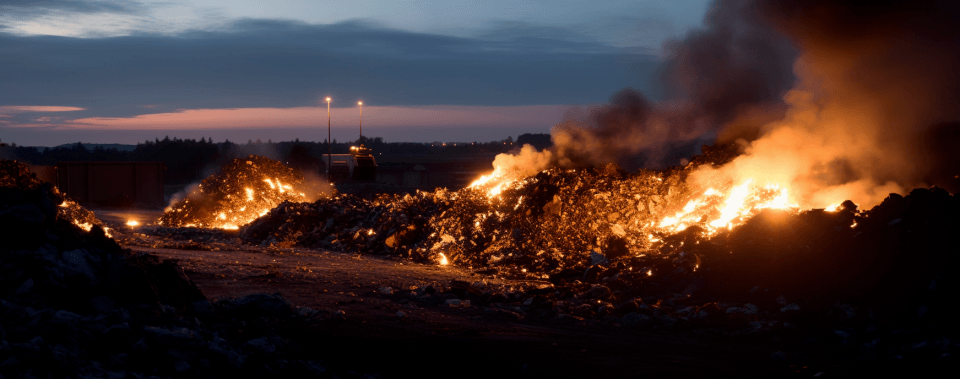Methane, a strong greenhouse gas produced by the breakdown of organic material in landfills, plays a significant role in global warming.

A sizeable $13 million investment round has been received by Nodal Power to support its ongoing process of turning landfill-produced methane gas into energy that is then sent to regional electrical networks as renewable power. However, not all of that energy will be sold. Some of it will be used directly by the business to mine Bitcoin cleanly and protect the blockchain.
“Bitcoin mining is a secondary tool we use when grid economics aren’t as favorable,” Matthew Jones, co-founder and COO of Nodal Power, told Decrypt. “Our data centers are the only places where we currently mine Bitcoin.”
Methane, a strong greenhouse gas produced by the breakdown of organic material in landfills, plays a significant role in global warming. That’s because, according to study, it traps heat 25 times better than carbon dioxide does.
This gaseous methane is captured by Nodal Power and used to generate electricity by burning it in a generator. Compared to just flaring off the methane, this decreases carbon emissions, gaining money from a resource that would otherwise be squandered while maintaining a cleaner environment.
Nodal Power now has two mining data centers in the US, and it has plans to open a third one in the early part of 2024. The first and biggest site, which is in the “southwest US,” mainly exports electricity to the neighborhood power company, while the second site, which is in the “mountainous western region,” has a capacity of 40 petahashes per second (PH/s), and powers 500 miners.
The environmental non-profit GreenpeaceUSA has disputed assertions made by an ESG oriented fund manager that Bitcoin mining is a significant cause of pollution and social suffering. In a study released last Tuesday, GreenpeaceUSA urged financial services firms that support bitcoin, such as BlackRock, Fidelity, JPMorgan, and others, to condemn the “climate destruction” caused by the cryptocurrency and push for a switch to a “cleaner protocol” that does away with the mining sector.
With $13 million in support, the third site will be similar to the second site in terms of electricity, mining capacity, and location.
Given that we typically dispatch power to the grid rather than utilizing it ourselves, it is perhaps interesting that our largest plant has the smallest Bitcoin deployment, according to Jones.
While much of the electricity is eventually sold to the grid like a “traditional power plant,” according to Daniel Batten, co-founder of CH4 Capital, practical considerations force 75% of landfills to use the methane on site. Investments are made in companies that intend to mine bitcoin using landfill methane through Batten’s $400 million fund.
The amount of methane burned in the United States and Canada has the potential to power the whole Bitcoin network, according to a new KPMG study.